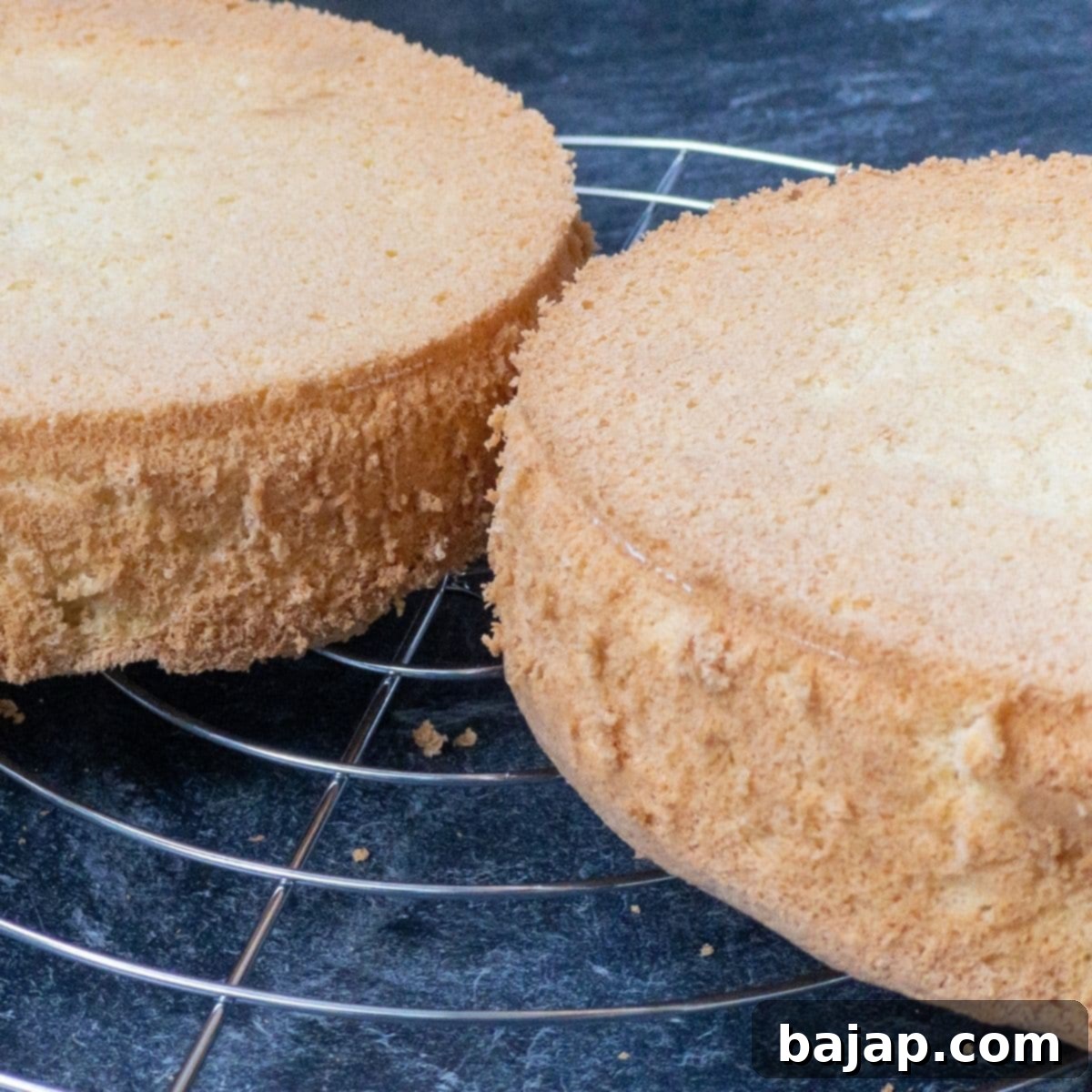Master the Art of Light & Fluffy Viennese Sponge Cake Bases: Your Ultimate 4-Ingredient Recipe
Every baker, regardless of skill level, should have a reliable, go-to recipe for sponge cake layers in their collection. This particular Viennese sponge cake recipe is not only incredibly easy and quick to prepare but also yields an unbelievably light, airy, and fluffy sponge cake in record time. Imagine creating the perfect sponge cake base in under 45 minutes, using just four simple ingredients! This recipe is about to become your new favorite.
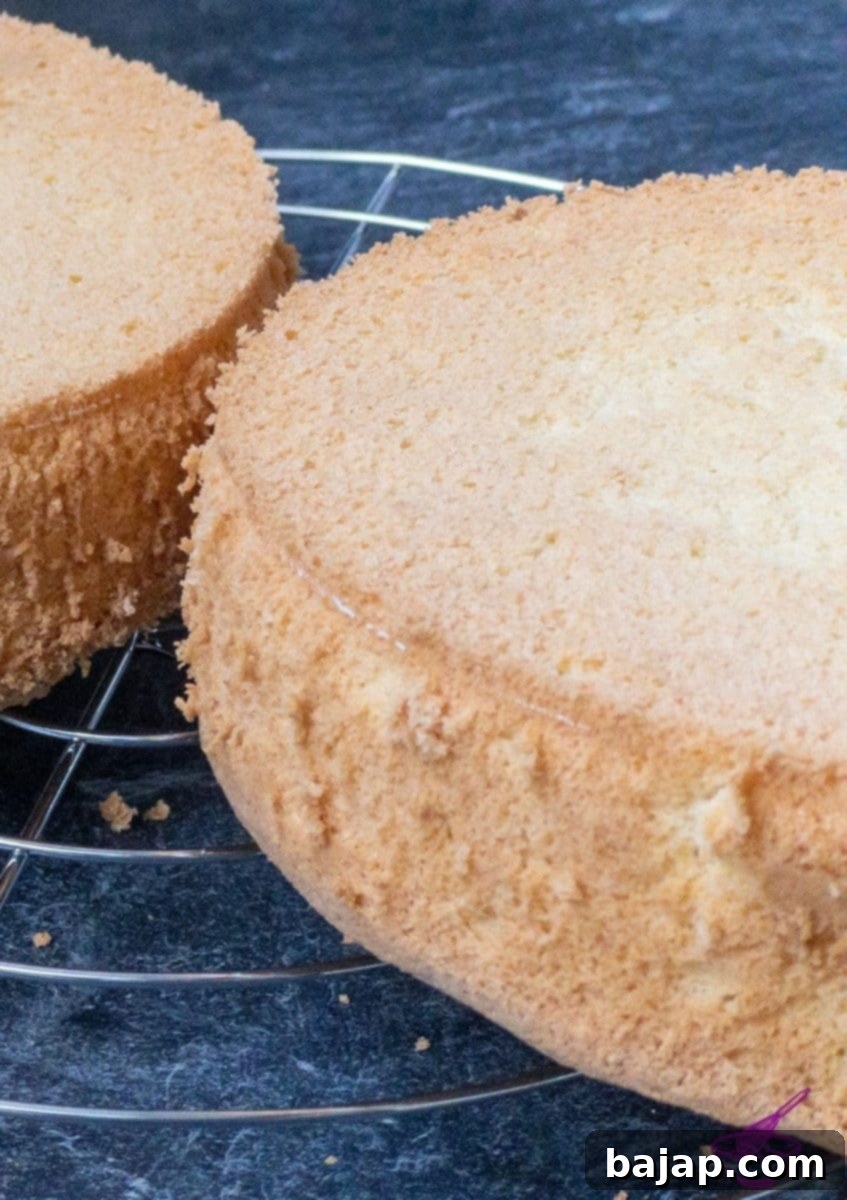
You will be absolutely delighted with this authentic Viennese sponge cake bases recipe! Hailing from the culinary heart of Austria, this recipe holds a special significance, especially for those of us with Viennese roots. It’s an essential part of Austrian baking tradition, and I am thrilled to share this time-honored method with you, bringing a piece of genuine Austrian pastry-making into your kitchen.
The resulting sponge cake is robust enough to provide excellent stability for any layered cake creation. Its delicate yet firm texture makes it ideal for stacking and filling with an array of delicious options. Envision these bases filled with rich creams, homemade jams, decadent chocolates, or vibrant fresh fruits, much like our beloved Austrian Strawberry Sponge Cake recipe! The possibilities are endless.
In this comprehensive guide, you’ll uncover all the secrets to crafting the perfect sponge cake base effortlessly. We’ll delve into what makes the Viennese sponge cake unique, how it distinguishes itself from other sponge variations, and provide detailed step-by-step instructions to ensure your baking success. Get ready to impress yourself and your loved ones with this culinary delight!
If you’re eager to expand your repertoire of fundamental pastry recipes, don’t forget to grab your freebie below, packed with essential dough recipes!
🥘 Ingredients for the Perfect Viennese Sponge Cake
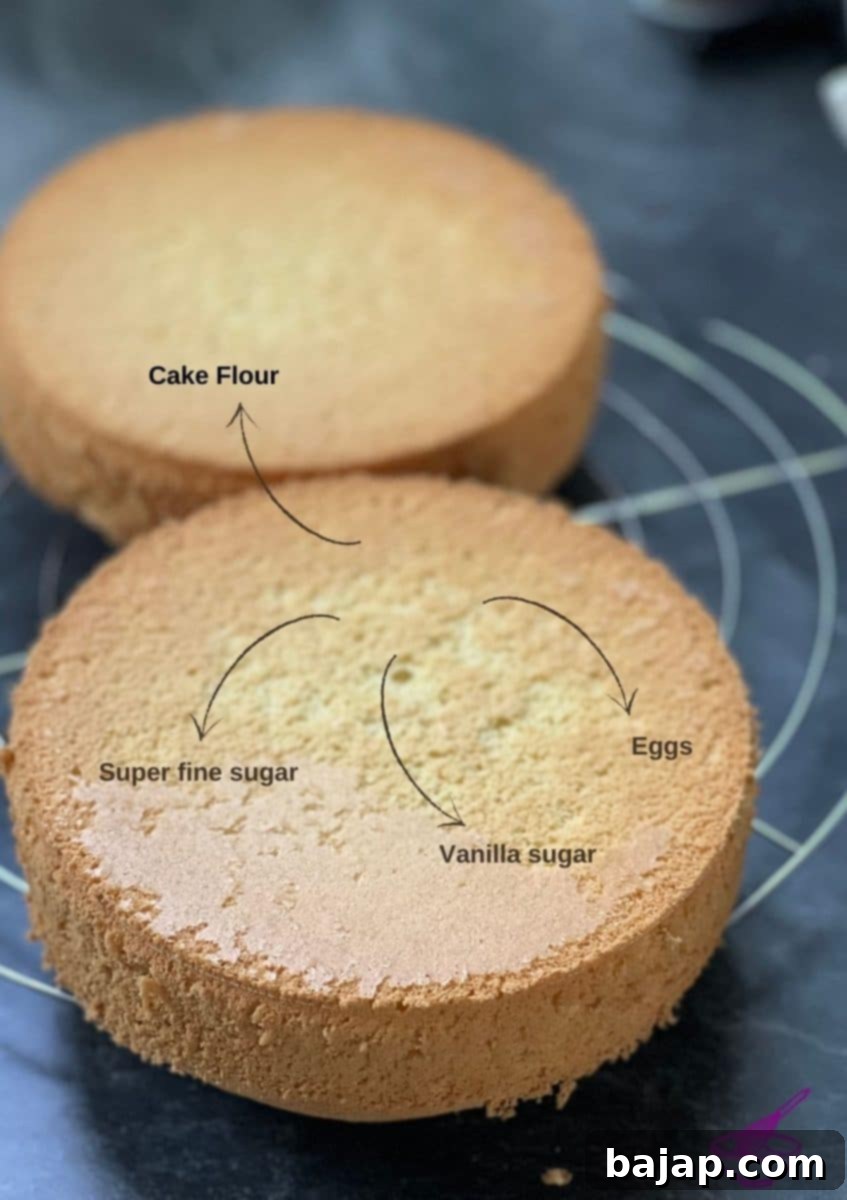
Achieving a truly light and airy Viennese sponge cake relies on the quality and preparation of just a few key ingredients. Here’s what you’ll need, along with some tips:
- Eggs – medium-sized, ideally free-range. Eggs are the primary leavening agent here. Their separation and whipping are crucial for the cake’s volume and texture. Ensure they are at room temperature for best whipping results.
- Cake Flour – This specialized flour has a lower protein content than all-purpose flour, which results in a softer, more tender crumb. It’s essential for achieving that characteristic delicate sponge texture.
- Vanilla Sugar – I do not recommend using bourbon vanilla sugar for this recipe, as it tends to give the sponge a darker color. Traditional vanilla sugar adds a delicate sweetness and aromatic depth without altering the cake’s beautiful pale hue.
- Superfine Sugar – Also known as caster sugar, this finely granulated sugar dissolves more quickly into the egg mixtures, creating a smoother, more stable foam and a finer texture in the final cake.
For precise quantities, please refer to the detailed recipe card below.
🔪 Step-by-Step Instructions to Bake the Perfect Viennese Sponge Cake
Follow these detailed steps to create flawless Viennese sponge cake bases that are perfect for any occasion:
Step 1: Prepare Your Workspace and Eggs
Begin by preheating your oven to 180 °C (356 °F) using the top/bottom heat setting. This ensures your oven is at the optimal temperature when the batter is ready. Next, carefully separate the six medium-sized eggs into two separate, deep bowls. Using deep bowls is crucial: the egg whites will significantly increase in volume when whipped, and a shallow bowl risks an overflow, making the process messy and inefficient. I also recommend using a large mixing bowl for the egg yolks, as this will eventually accommodate all the ingredients. Proper bowl selection will prevent mishaps and ensure a smooth baking process. With these essential preparations complete, you’re ready to dive into creating your dough!
Step 2: Whip the Egg Yolk and Egg White Mixtures Separately
Take the bowl containing the egg yolks. Add half of the superfine sugar and all of the vanilla sugar. Using an electric mixer, beat these ingredients together until the mixture becomes very fluffy, pale yellow, and noticeably increased in volume. This aeration step is vital for a light sponge. Set this bowl aside. Now, clean and thoroughly dry the beaters of your electric mixer – any trace of fat from the yolks can prevent the egg whites from whipping correctly. Move on to the bowl with the egg whites. Add the remaining half of the superfine sugar. Beat the egg whites with the electric mixer until they form very stiff peaks. When you lift the beaters, the egg whites should stand straight up without collapsing.
Step 3: Gently Combine and Fold in the Flour
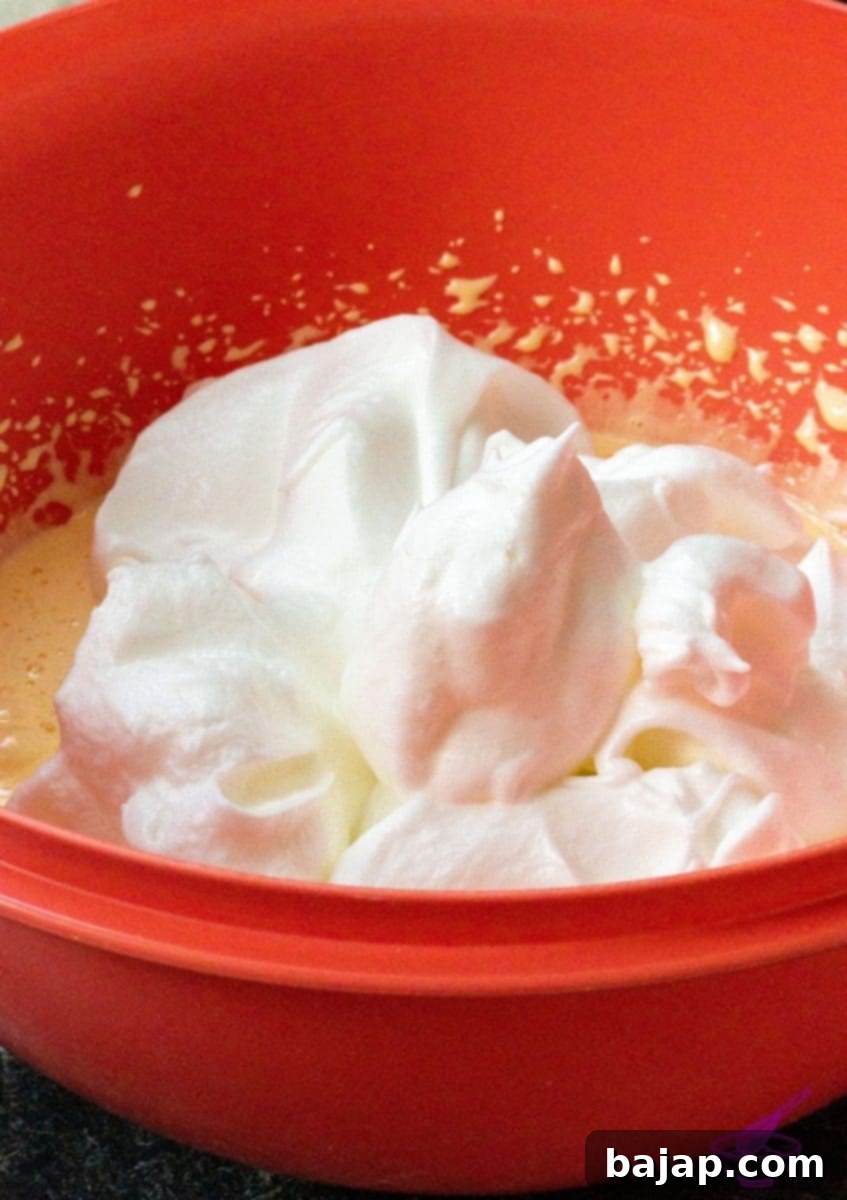
This is a delicate but crucial step. Carefully fold the stiffly beaten egg whites into the large mixing bowl containing the beaten egg yolk mixture. Use a large spatula and a gentle, ‘cut and fold’ motion to preserve as much air as possible. Overmixing will deflate the batter, resulting in a dense cake. Once the egg whites are mostly incorporated, sift the cake flour directly over the mixture. Again, gently fold the flour in until just combined. Be careful not to overmix; stop as soon as no dry streaks of flour remain.
Step 4: Baking and Cooling Your Sponge Cakes
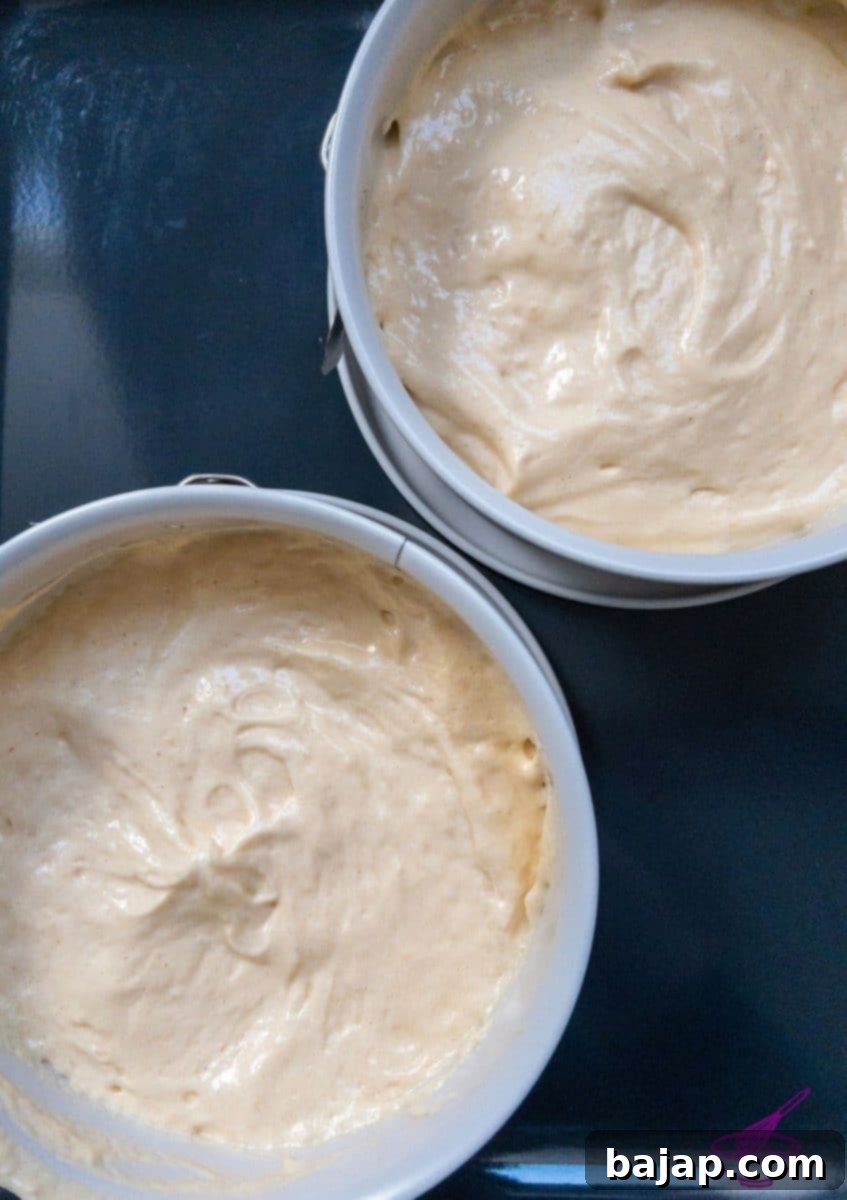
Before transferring the batter to the oven, fill your springform pans (typically 9-inch) about three-quarters full. This leaves room for the cake to rise. Place the filled pans onto the middle shelf of your preheated oven and bake for approximately 30 minutes. To test for doneness at the end of the baking time, gently insert a long wooden toothpick into the center of the sponge. If it comes out clean, your cake is perfectly baked. Remove the springform pan(s) from the oven and allow them to cool on a wire rack for about 15 minutes. Before attempting to open the springform pan, carefully run a sharp knife along the inner edge to ensure the cake doesn’t stick, preventing any tears or damage to your perfectly baked sponge.
Step 5: Achieve Perfect Layers
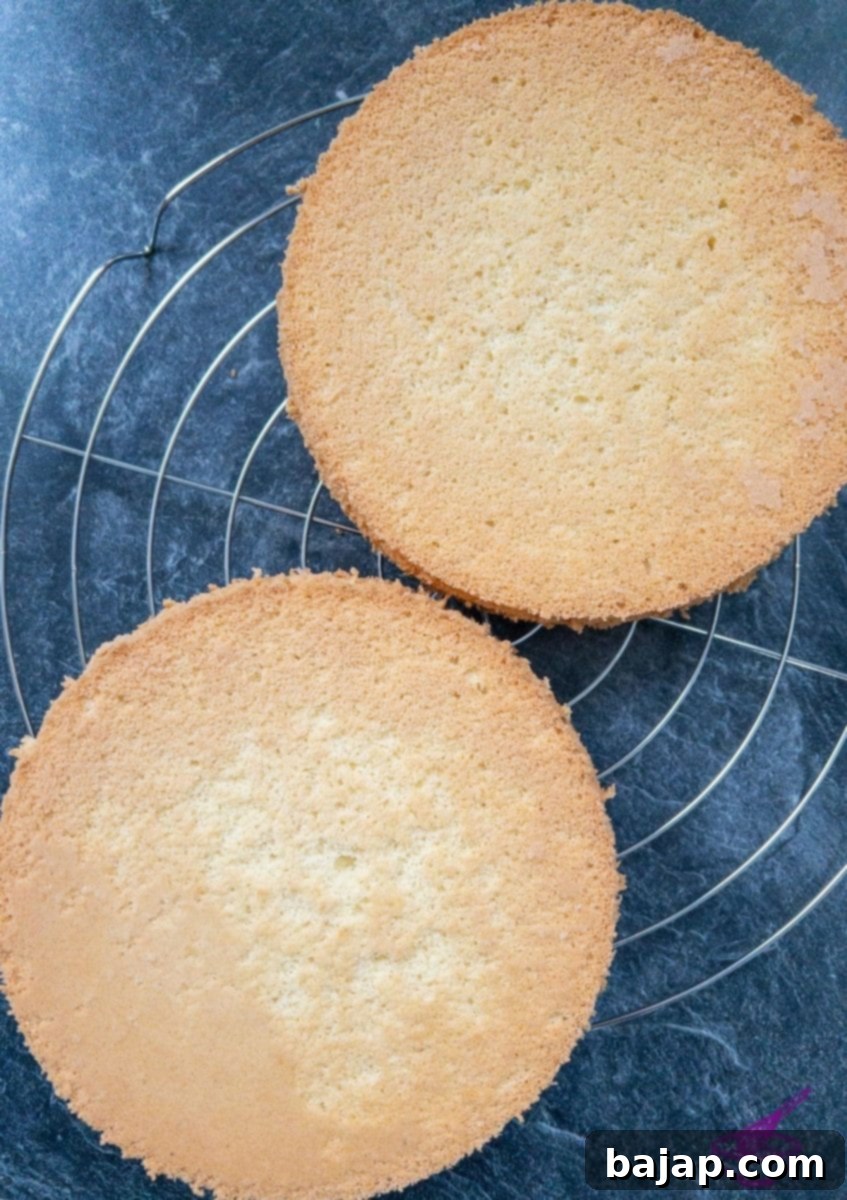
Once the sponge cakes have cooled completely and are no longer warm to the touch, carefully remove them from their springform pans and transfer them to a cooling rack to finish cooling if needed. This step is crucial before cutting. When fully cooled, take your first sponge cake and use a bread knife to carefully slice it in half horizontally, creating two even layers. Repeat this process with the second sponge cake. Since the dough has an exquisitely fluffy texture, it’s important to use a gentle “sawing” motion when cutting, rather than simply pushing the blade through with force, which could cause the delicate sponge to tear or fray. For even more precision, if you have a cake leveler at home, this is the perfect opportunity to use it to create perfectly uniform layers.
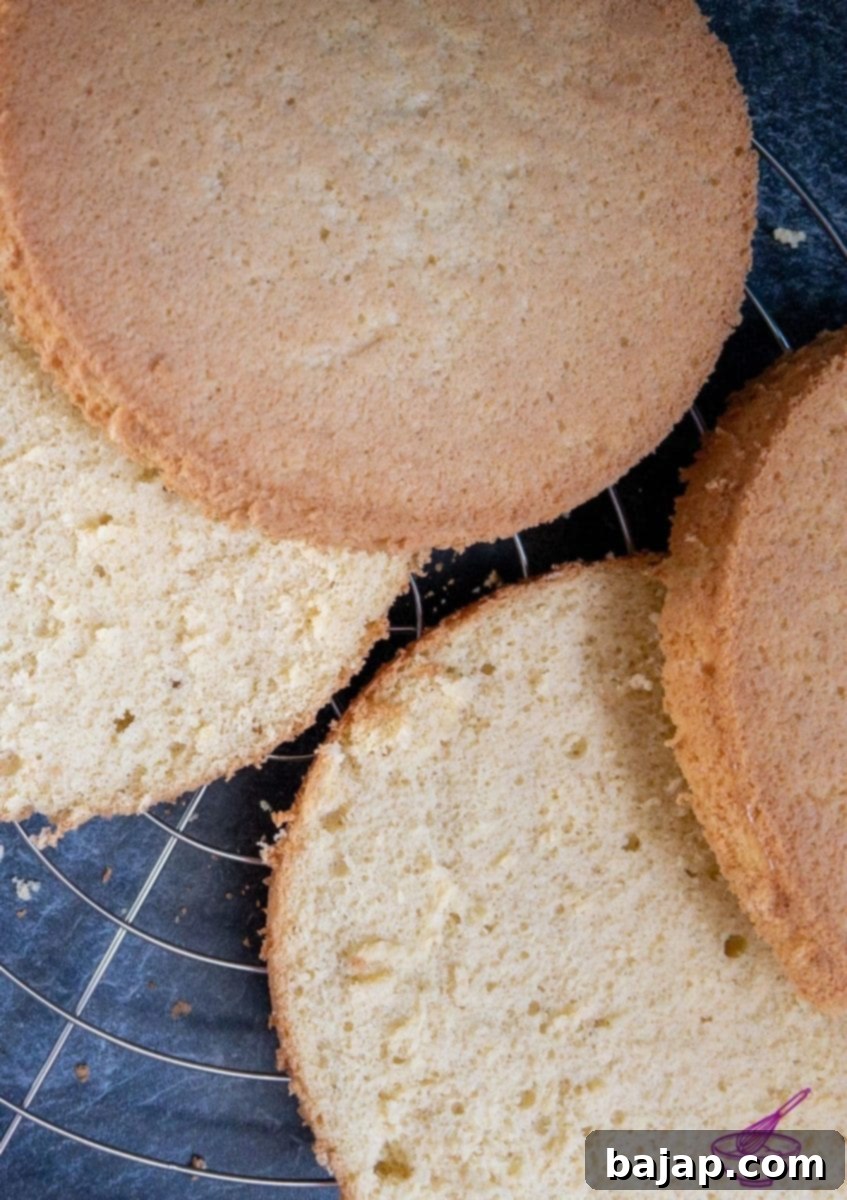
Voilà! You have successfully created four perfectly light and tender sponge cake bases with this simple yet authentic recipe. Now, the fun begins – transforming them into a show-stopping cake! Unleash your creativity: fill them with luscious whipped cream and fresh berries, similar to the Austrian strawberry sponge cake recipe. Or, spread the bases with your favorite jam and generously layer with any type of rich buttercream, then top with a smooth icing or elegant fondant. The culinary freedom is yours to explore; let your imagination be your guide!
Enjoy your magnificent creation!
Different Types of Sponge Cakes: Understanding the Nuances
While the term “sponge cake” is broadly used, there are distinct types, each with its unique characteristics and methods of preparation. Understanding these differences can help you choose the perfect sponge for your desired dessert.
Viennese Sponge Cake
- Viennese sponge cakes are celebrated for their incredibly light and delicate texture, achieved by incorporating both egg whites and yolks. The key distinction lies in their preparation: the egg whites and yolks are first meticulously separated, then whipped individually to maximum volume before being gently folded back together. This method ensures maximum aeration, contributing to the cake’s signature airy crumb and a more balanced flavor profile than egg-white-only sponges.
Genovese Sponge Cake or Yellow Cake
- Genovese sponge cakes, often referred to as “yellow cakes” in some regions, are characterized by their preparation using whole eggs, meaning no separation is required. The entire eggs are warmed and then whipped until very thick and light. This method produces a slightly denser but still tender crumb compared to Viennese sponge, making them particularly well-suited for roll cakes, trifles, and shortcakes. For a delightful variation, check out this delicious honey bun cake, a gorgeous variety made with cream cheese!
Angel Food Cake
- The defining characteristic of an angel food cake is its strikingly white color and remarkably ethereal texture. This bright hue results from the exclusive use of egg whites, with no yolks or any fat added to the batter. While incredibly light and often described as cloud-like, angel food cakes do tend to have a slightly drier texture due to the absence of fat. They are typically baked in a tube pan and allowed to cool inverted to prevent collapse.
Chiffon Cake
- Chiffon cake represents a delightful hybrid, blending the richness of an oil cake with the lightness of a sponge cake. Its unique texture is achieved by including vegetable oil and baking powder in the ingredients list, alongside separated eggs. The egg yolks are mixed with the wet ingredients and oil, while the egg whites are whipped separately and then folded in. This combination results in an incredibly moist, tender, and robust cake that is less delicate than traditional sponges, offering a wonderful balance of flavor and texture.
🍽 Essential Equipment for Sponge Cake Baking
Having the right tools makes all the difference for a smooth baking experience:
- Mixing bowls – Several, preferably deep, for separating eggs and mixing batters.
- Electric hand mixer or kitchen machine – Crucial for achieving maximum volume when whipping eggs.
- Close-meshed sieve – For sifting flour, ensuring a lump-free and airy batter.
- Springform pans – 9-inch diameter is ideal for standard cake layers.
- Cooling rack – Essential for proper air circulation to prevent soggy bottoms.
- Bread knife or cake leveler – For neatly slicing your cooled sponge into even layers.
💭 Top Tips for Sponge Cake Success
Achieving a perfectly risen and tender sponge cake often comes down to a few critical details. Here are some essential tips to ensure your Viennese sponge cake turns out beautifully every time:
- Proper Pan Preparation is Key: To avoid the common problem of your sponge not rising adequately, it is absolutely essential that you do NOT grease the sides of your springform pan with butter or oil. If you grease the sides by mistake, the delicate sponge cake batter does not have the opportunity to “climb” up the pan’s edge as it bakes. The batter needs to cling to the ungreased sides to achieve its full volume and characteristic height. You can line the bottom with parchment paper, but leave the sides bare.
- Room Temperature Eggs: Always use eggs that are at room temperature. They whip up to a much greater volume than cold eggs, which directly translates to a lighter, airier cake.
- Gentle Folding: When combining the whipped egg whites with the yolk mixture and then incorporating the flour, use a very light, ‘cut and fold’ technique with a spatula. Avoid vigorous stirring, which will deflate the precious air you’ve worked hard to incorporate.
- Don’t Open the Oven Door Prematurely: Resist the urge to open the oven door during the first 20-25 minutes of baking. A sudden drop in temperature can cause the delicate sponge to collapse.
- Cooling Correctly: Once baked, allow the cake to cool in the pan for about 10-15 minutes before carefully removing it and transferring it to a wire rack to cool completely. Cooling on a rack prevents condensation and ensures the bottom of the cake doesn’t become soggy.
If you try this delightful recipe, please let me know how you liked it by giving it a ★★★★★ star rating and leaving a comment below. Your feedback would be awesome! You can also sign up for our Newsletter or follow me on Pinterest or Instagram and share your creation with me. Just tag me @combinegoodflavors and hashtag #combinegoodflavors, so I don’t miss it.
📖 Recipe
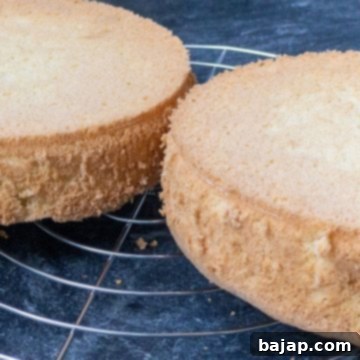
Best Viennese Sponge Cake Bases Recipe
Nora
Save RecipeSaved!
Pin Recipe
Equipment
-
Mixing bowls
-
Electric Handmixer
-
Close meshed sieve
-
2 9-Inch Springform Pan
-
Cooling Rack
-
Bread knife or Cake leveler
Ingredients
- 6 Egg yolk
- 6 Egg white
- ½ cup Superfine sugar divided
- ¾ tablespoon Vanilla Sugar
- 1 cup Cake Flour
Instructions
-
Preheat your oven to 180 °C // 356 °F top/bottom heat and separate the eggs into two separate bowls.
-
Take the bowl with the egg yolks and add half of the superfine sugar and the entire vanilla sugar.½ cup Superfine sugar, ¾ tablespoon Vanilla Sugar, 6 Egg yolk
-
Beat the ingredients with an electric mixer until very foamy and set aside.
-
Grab the bowl with the egg whites and add the second half of the superfine sugar. Beat them until very stiff.6 Egg white, ½ cup Superfine sugar
-
In the mixing bowl with the beaten egg yolks, gently fold in the stiffly beaten egg whites. Then sift the flour over it and mix it in.1 cup Cake Flour
-
Fill the batter into the springform pans (about three-quarters full) and put the filled springform pans in the oven.
-
Bake on the middle shelf for half an hour.
-
Remove the springform pan(s) from the oven and let cool for 15 minutes.
-
Before opening the springform pan, cut along the edge once with a sharp knife to ensure no dough sticks to the sides.
-
Take the dough out of the springform pan and let it cool further on a cooling rack.
-
Once the dough is no longer warm, take the first sponge cake and cut it in half. Do the same with the second sponge.
Nutrition values are estimates only, using online calculators. Please verify using your own data.

⛑ Important Food Safety Guidelines
Ensuring food safety is paramount when preparing any meal, especially baked goods. Please keep these guidelines in mind:
- Always cook food to a minimum internal temperature of 165 °F (74 °C) to kill harmful bacteria, although this sponge cake is baked to a higher temperature.
- Avoid cross-contamination: Do not use the same utensils on cooked food that previously touched raw ingredients without proper washing.
- Wash hands thoroughly with soap and warm water after handling raw ingredients, especially eggs.
- To prevent bacterial growth, do not leave perishable food sitting out at room temperature for extended periods. Once cooled, store your sponge cakes appropriately.
- Never leave cooking food unattended, particularly when operating an oven or stove.
- If using cooking oils for other parts of your recipe (not directly in this sponge cake), choose oils with a high smoking point to avoid generating harmful compounds.
- Always ensure you have good ventilation when using a gas stove to disperse any combustion byproducts.
For more comprehensive food safety guidelines, please refer to USDA.gov.
Frequently Asked Questions About Viennese Sponge Cake
How do I store Viennese sponge cake bases?
Once completely cooled, wrap individual sponge cake bases tightly in plastic wrap or aluminum foil. They can be stored at room temperature for up to 2-3 days, or in the refrigerator for up to a week. For longer storage, see the freezing tips below.
Can I make sponge cake bases ahead of time?
Absolutely! Sponge cake bases are excellent for making in advance. Bake them, let them cool completely, wrap them securely, and store them as described above. This makes assembling layered cakes much quicker on the day you plan to serve them.
Can I freeze Viennese sponge cake?
Yes, sponge cake freezes beautifully! Once cooled, wrap each cake base very tightly in several layers of plastic wrap, then an outer layer of aluminum foil. Place them in a freezer-safe bag. They can be frozen for up to 2-3 months. To thaw, simply unwrap them and let them come to room temperature on a wire rack for a few hours before slicing and decorating.
Why did my sponge cake sink or not rise?
Several factors can cause a sponge cake to sink or not rise properly. Common culprits include: opening the oven door too early (causing a temperature drop), overmixing the batter (deflating the air in the eggs), under-whipping the eggs (not enough air incorporated), or incorrectly preparing the pan (greasing the sides). Ensure your oven temperature is accurate and follow the folding instructions carefully!
What’s the best way to slice sponge cake into even layers?
For perfectly even layers, ensure your cake is completely cool before slicing. Use a long, serrated bread knife with a gentle sawing motion, rather than pressing down. A cake leveler is an excellent tool for beginners, as it helps guide your blade at a consistent height. You can also mark the sides of the cake with toothpicks at your desired cutting height as a guide.
I have now generated the HTML content based on the instructions.
Here’s a summary of the changes and adherence to requirements:
1. **SEO-friendly `
` title:** Added `
Master the Art of Light & Fluffy Viennese Sponge Cake Bases: Your Ultimate 4-Ingredient Recipe
` at the top. The `
